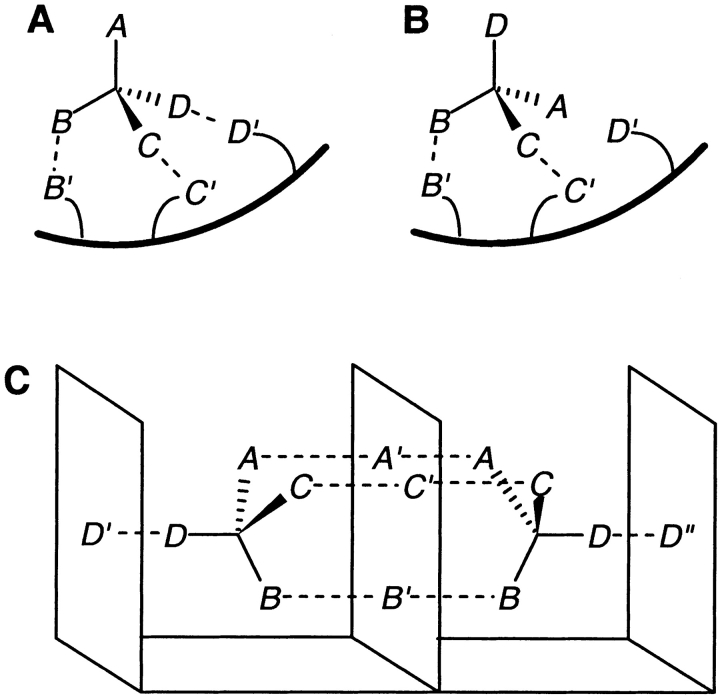Fig. 1.
The three-point attachment (TPA) model and the four-location (FL) model. (A) In the TPA model, three groups, B, C, and D on one enantiomer, simultaneously bind to B,′ C′, and D′ on the receptor. (B) Two groups, B and C of the opposite enantiomer, bind to B′ and C′, but the third group D cannot simultaneously bind to D′. (C) In the FL model, binding sites A′, B′, and C′ are positioned on a virtual plane in the receptor such that both enantiomers of a substrate can enter into three simultaneous interactions, but on opposite sides of that plane. This necessitates the presence of a fourth binding site (D′ or D"), to distinguish between substrate enantiomers.

